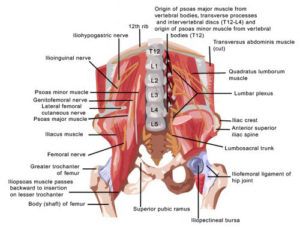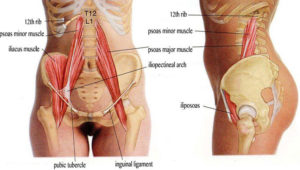Myofascial Release
Deep Tissue Bodywork
Conventional massage usually works by moving and stimulating the flow of blood and lymph in the superficial tissues of the body. According to the study of reflexology, it also increases the displacement and circulation of fluids especially towards the organs and tissues which lie much deeper in the body, often indirectly alleviating any existing nervous tensions.
Deep tissue bodywork, which also includes myofascial release and fascial stretching, focuses a lot more on disturbed patterns of contraction within the tissues of the musculoskeletal system which are caused by the fruitless resisting or overcompensating of the muscular- and fascial tissues of the body.
Even when we are deeply relaxed, our body will still hold and maintain a set of imprinted limitations which can form the basis for numerous pains and restrictions when expressing ourselves both physically and non-physically. For instance the inability to freely laugh, cry or scream.
Even being relaxed, our body often maintains a set of imprinted limitations which forms a basis for numerous pains and restrictions that we could experience when expressing ourselves be it physically or non-physically. For instance the inability to freely laugh, cry or scream.
Deep tissue bodywork relies on the correct understanding of the different layers of connective tissue within the body and on a manual ability to work through these layers to relax, lengthen and release them. Dissolving and freeing up chronic holding patterns in most effective and energy efficient ways possible.
Deep tissue bodywork basis itself on a correct understanding of the different layers of connective tissue within the human body. It focuses on the manual ability to work through these intelligent layers so to relax, lengthen and release them. That way, it dissolves and frees up chronic holding patterns in a most effective and energy-efficient way possible.
With deep tissue bodywork the emphasis lies on altering myofascial restrictions wherever in the body. After treatments most clients will feel an increased degree of relaxation, a remarkable alleviation of pain and they also say to experience longer lasting benefits later.
The emphasis lies on altering myofascial restrictions wherever in the body. After treatments, most clients will feel an increased degree of relaxation and a remarkable alleviation of their pain. And much later, you can hear them say to have experienced the also much longer-lasting benefits.



Myofascial
The fascia system is a complex supportive web throughout the body affecting all components of the musculoskeletal, nervous and visceral (organ) systems. It surrounds groups of muscle fibres as well as entire groups of muscles and organs. While it is not contractile, well in fact science is not fully sure about that yet, it can be passively elastically deformed. That is how it can retain tension from physical and emotional traumas and will caus it a person to starts suffering from chronic pain and/or physical dysfunction.
Chronically tense muscles restrict blood flow and easily fatigue the body. Both fascia and muscle tissues can become shortened if they are improperly used. As well, layers of fascia can stick together. Myofascial release is a type of deep tissue bodywork that provides a wonderful key to unlocking all kinds of body pains and restrictions, both physical and non-physical. It is used to evaluate and treat restrictions in the body’s contractile connective tissues (muscles) and non-contractile supportive connective tissues (fascia) by the application of gentle traction, pressures and positioning.
Contrary to a non-invasive way of working however, Jelle Schaegen chooses instead to apply high amounts of precise applied pressure on heavily contracted myofascial tissues so to efficiently trigger wholesome releases at specifique spots with lots of tension. The average pressure varies around 25kg on a few square centimeters. True, it is not a nice feeling but so men and women of all ages hardly ever have a problem with that. Some of them even manage to fall a sleep. And no bruises will be left even on a very pale skin.
The contracted myofascial tissues can keep vital nerves in relentles strangleholds forever; they can severely constrict the normal innervation of otherwise healthy nerves and considerably slowdown the flow of important fluids. Nevertheless, being fully familiar with the more non-invasive way of working Jelle thinks the non-invasive way a lot less effective. Another discipline for instance who chooses to apply strong pressure instead of working in more non-invasive ways is Rolfing. See here
Fascia is a complex supportive web throughout the body affecting all components of the musculoskeletal, nervous and visceral (organs) systems.
Myofascial release techniques are used to coax muscles in spasm to relax, and break the adhesions in the fascia. Bodies respond to these therapies by releasing tension that has been stored in the fascia, thus allowing more functional flexibility and mobility of the muscles, fascia and associated structures.
Iliopsoas Release
There are few therapists who are able to create a strong release of the iliopsoas muscle with their hands in a safe and pleasurable way. Many years ago Jelle Schaegen developed a special method that would enable him to implement exactly what was needed. And during the years he used that manipulation technique a couple of thousand times with great success.
Here you can read more about the iliopsoas muscle and I have also added some links to give you more relevant and helpful information.
The psoas muscle is involved in many of the acute and chronic problems of the body. It’s hard to believe the amount of pain and suffering caused by a muscle so deep in the abdomen. Some of the conditions involving the psoas include: low back pain, sciatica, invertebral disk problems, spondylolysis, all kind of other spine problems, pelvic instability, restless legs, sacroiliac joint dysfunction, knee pain, menstrual pain, infertility and even gastrointestinal disorders.
So what keeps the psoas in contraction? The psoas can stay contracted because of postural habits and trauma. The wrong way we stand, walk and sit can distort the psoas. If we walk or stand with our chin in an overly forward position then certain muscle will permanently tighten.
Ida Rolf wrote, “a deteriorated psoas” chronically flexes the body at the level of the groin, so that it prevents truly erect posture. Sitting through much of the day the psoas shortens to keep us bio mechanically balanced in our chairs. Over time we develop a “normal” way of holding the psoas that is dysfunctional.
Unresolved trauma can keep the psoas short and reactive. After a traumatic occurrence animals will release their protective responses by shaking. Humans often bypass this release response and hold the trauma in their bodies. Until the psoas is released that muscle may stay contracted and fearful and go into further shortening and spasm very easily.
Very useful links about thoracic outlet, iliopsoas and pelvic release
Fascia Magnified 25x (Subtitled)
Psoas, Instinctive Responses & The Healthy Pelvis
What is Structural integration: By Dr. Thomas Findley
What is Fascia? by John F. Barnes, PT
Giving Massage a New Name and Reputation
What is Fascia? by John F. Barnes, PT
By John Latz Key elements of connective tissue massage
Psoas Muscle Pain: Nine Questions and Answers
Frankie L. Burget, The Neglected Fascial System
Susan Brinkmann, The New Age Hijacking of Myofascial Release Therapy
Dr. Nabil Ebraheim, Brachial Plexus Branches & Nerves – Everything You Need To Know, video
The explosion of fascia research
Brachial Plexus Branches & Nerves – Everything You Need To Know – Dr. Nabil Ebraheim
Psoas… please release me, let me go!
(This is not how Jelle Schaegen works; the psoas is not the problem. It’s the fascia that is keeping the psoas in a stranglehold)
